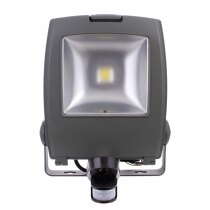-
Contact
Sales & Customer Service
0800 612 6537 support@safelincs.co.uk Live ChatDelivery Enquiries
0800 077 6149 - Resources
Fire & Safety Solutions
CALL OUR TEAM NOW 0800 612 6537
Lines open today 8am - 6pm
FREE Delivery
on marked products
Live Chat - Online
Instant help & Advice
Trade Discounts
and exclusive pricing
0% Credit Available
Open an account now
5 Star Customer Feedback
All Emergency Lighting
Having emergency lighting in place is a legal requirement to ensure safe evacuation from your premises during power failures or emergencies. Our range of emergency lighting solutions includes both maintained and non-maintained options, ideal for commercial, industrial, and residential use. Designed to comply with British Standards, these lights ensure clear visibility along escape routes and exits, providing peace of mind for responsible persons. With energy-efficient LED technology and self-testing features, our emergency lights offer reliable, low-maintenance performance, enhancing safety in stairwells, corridors, and high-traffic areas. Explore our wide selection to meet your specific needs.
Emergency LED Floodlight with PIR Motion Activation
Ideal for dimly lit areas, the 50W floodlight is fitted with a separate PIR sensor and will activate upon detecting movement. In the event of a power cut the unit will continue to function for 3 hours.
- 50W LED emergency floodlight
- IP65 floodlight and IP44 PIR sensor
- Adjustable dusk setting and light duration
- Exclusive 5 year warranty
Double-Sided LED Emergency Fire Exit Sign with Downlight - Pescara
The Pescara series comes in a range of stylish finishes that will suit any interior. An opal downlight panel casts additional light on your escape route in the event of power loss.
- Double-sided, suitable for surface mounting or suspending from ceilings
- Designed for indoor installation – IP20 ingress protection
- Range of finishes - white, black, chrome and brass
Single-Sided LED Emergency Fire Exit Sign with Downlight - Pescara
The Pescara range of LED emergency fire exit signs offer high energy efficiency and come in a variety of high quality finishes to suit the style of your premises.
- Available in white, chrome, black and brass finishes
- Single-sided, suitable for surface mounting
- IP20 protection, ideal for indoor installations
Ultra Slim Double-Sided LED Emergency Fire Exit Sign - Petina
The Petina range of LED emergency fire exit signs is available in a choice of four different finishes designed to complement any interior.
- Slim 45mm depth with wide bezel design
- Variety of mounting options including ceiling suspension
- Zintec coated sheet steel construction
Ultra Slim Single-Sided LED Emergency Fire Exit Sign - Petina
The Petina LED emergency fire exit sign is ultra slim and available in a range of finishes to suit any sleek, modern interior.
- Choice of white, black, chrome and brass finishes
- Only 30mm deep with a wide bezel design
- High quality mild steel construction
Emergency Lighting Bulkhead Slave Unit - Eden
The Eden 4W Slave Unit is powered from a central bank of batteries located within the building to ensure escape routes are illuminated during a power failure. Featuring an IP65 rating, the bulkhead is suitable for indoor and outdoor use.
- Suitable for wall or ceiling mounting
- Available in 24, 50 or 110V DC
- Exclusive 5 year warranty
Page 3 (46 of 46 Products)
Emergency Lighting Regulations
Emergency lighting legally required in most commercial and some residential buildings e.g. the communal areas of HMO's under British Standards BS 5266. These regulations ensure that in case of a power outage, clear, well-lit escape routes guide occupants to safety. An exception may be in the case of ‘borrowed’ light, where if the lights from external street lamps are a reliable source of lighting to illuminate escape routes, it can sometimes be considered sufficient. The British Standards specify where lights should be placed, what kind of lights are needed, and the testing requirements to ensure the systems are operational. Following these guidelines helps meet health and safety obligations while ensuring the safety of employees, visitors, and residents.
Maintained vs Non-Maintained Emergency Lighting
When choosing emergency lighting, it’s essential to understand the difference between maintained and non-maintained systems. Maintained emergency lights are designed to stay on continuously, making them suitable for areas like corridors and public spaces where lighting is required at all times. Non-maintained lights, on the other hand, only activate during power failures. These are commonly used in areas that don’t require constant lighting but still need to ensure safe evacuation during emergencies. Both types are integral to a building's overall safety plan.
LED Emergency Lighting
LED emergency lighting offers significant advantages over traditional lighting systems, particularly in terms of energy efficiency and longevity. LEDs consume less power, helping reduce energy costs, while providing bright, reliable illumination for emergency situations. Additionally, LED lights have a longer lifespan, requiring less frequent replacements, which minimises maintenance. These benefits make LED emergency lighting a practical and environmentally friendly choice for both commercial and residential premises, ensuring safe evacuation routes with minimal environmental impact.























